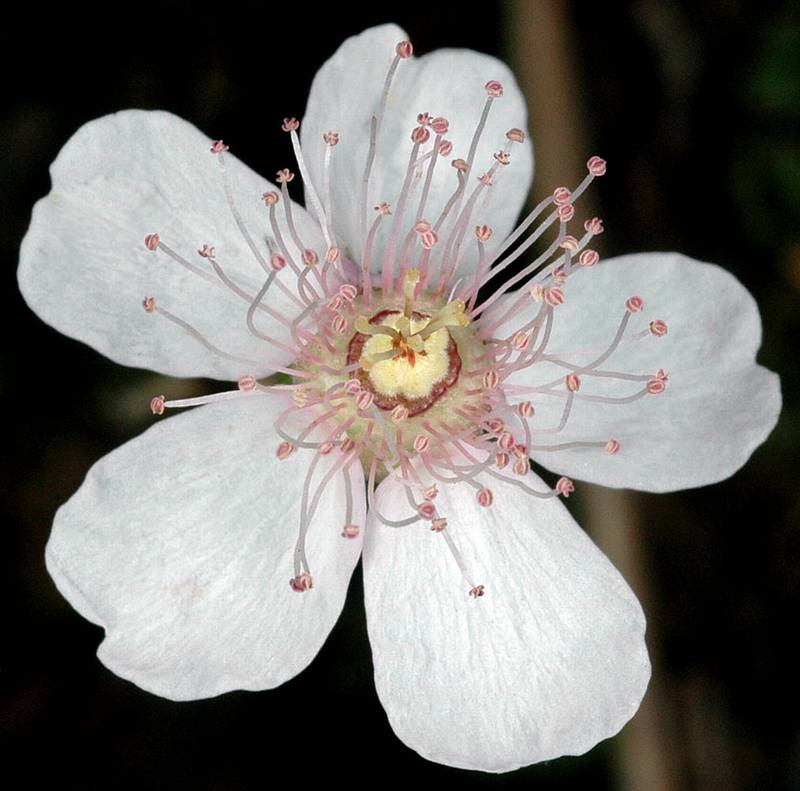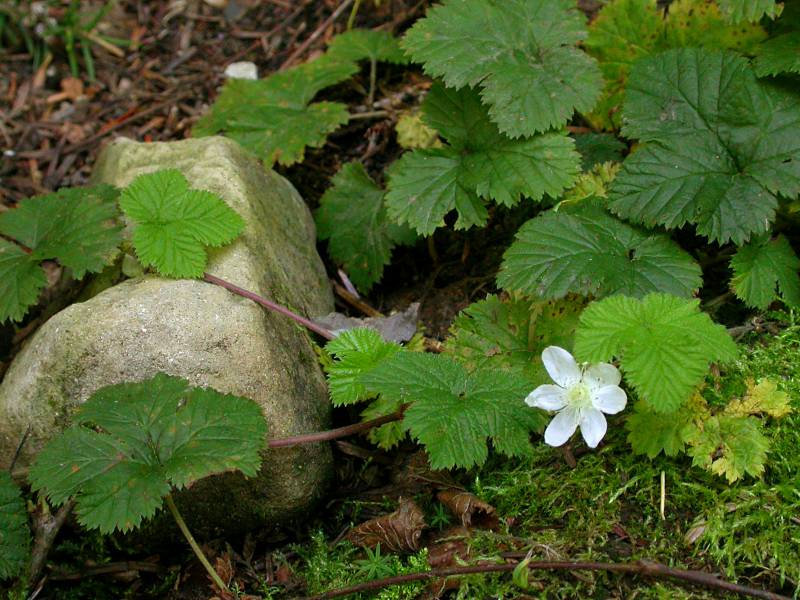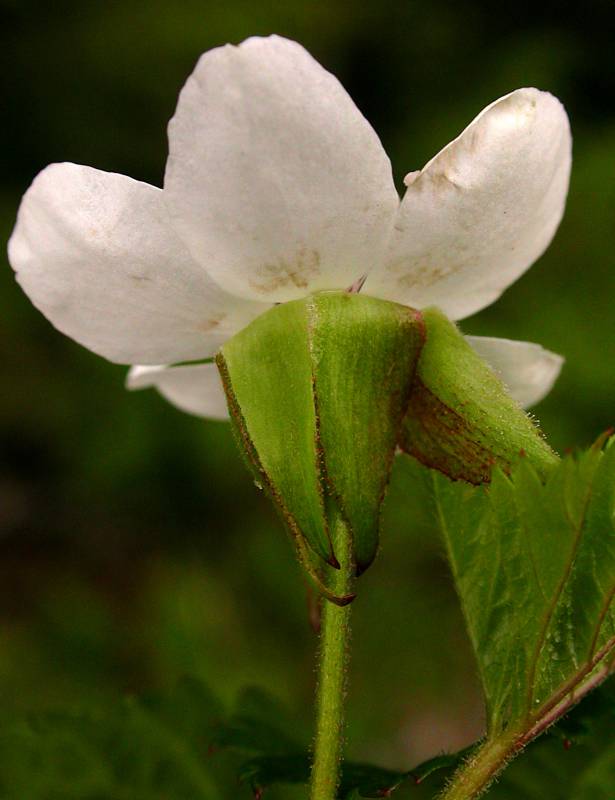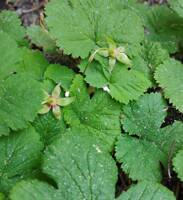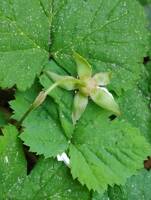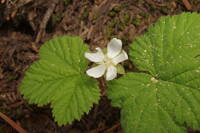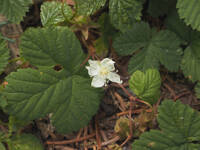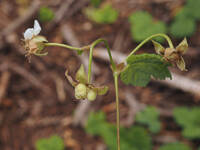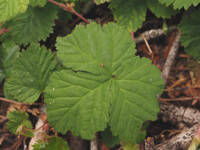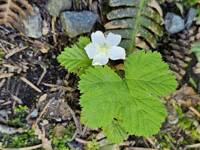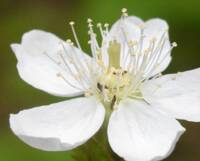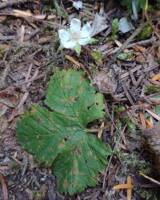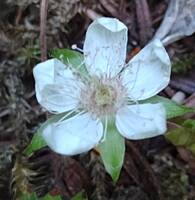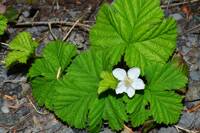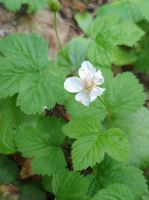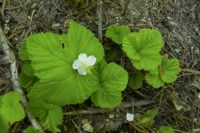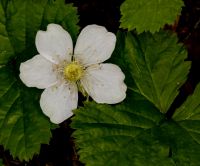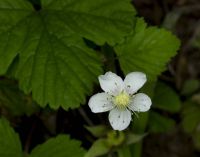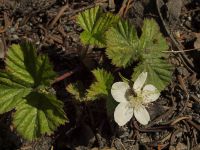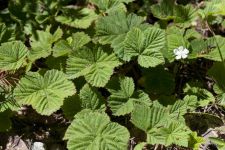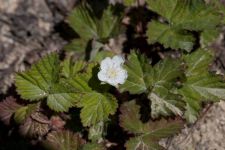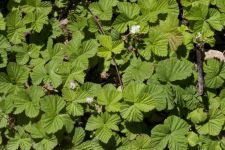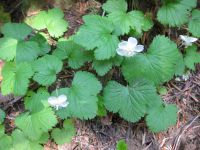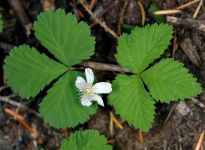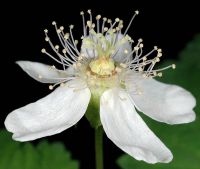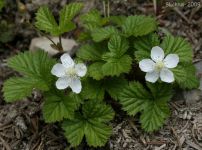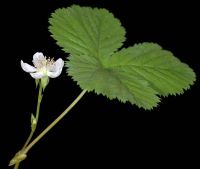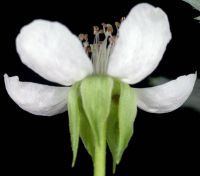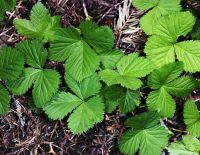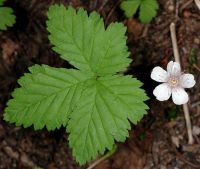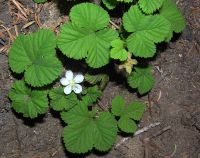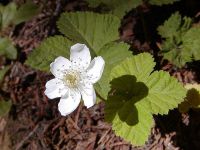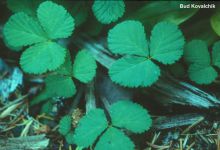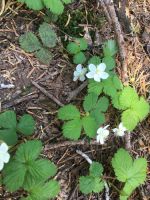Distribution: Occurring on both sides of the Cascades crest and in the Olympic Mountains in Washington; British Columbia to California.
Habitat: Moist to dry woods, lowlands to subalpine.
Flowers: June-August
Origin: Native
Growth Duration: Perennial
Conservation Status: Not of concern
Pollination: Apomixis, bumblebees, bees, beetles
Unarmed, pubescent, trailing perennial with stolonous, freely-rooting, herbaceous stems up to 2 m. long, the erect flowering stems up to 1 dm. long.
Leaf blades broadly cordate-reniform, 3-6 cm. broad, shallowly to deeply 3-lobed, the lobes rounded, doubly serrate; 1-3 reduced leaves on the flowering stems.
Flowers 1 or 2 on each stem; calyx puberulent, the 5 lobes lanceolate, pointed, 4-7 mm. long, reflexed; petals 5, white, 5-8 mm. long; stamens numerous, pistils 7-15.
Drupelets puberulent, juicy, semi-coherent, red, the fruit under 1 cm. broad.
Publication: Proc. Amer. Acad. Arts 17: 201. 1882.
PNW Herbaria: Specimen records of Rubus lasiococcus in the Consortium of Pacific Northwest Herbaria database
WA Flora Checklist: Rubus lasiococcus checklist entry
OregonFlora: Rubus lasiococcus information
E-Flora BC: Rubus lasiococcus atlas page
CalPhotos: Rubus lasiococcus photos

